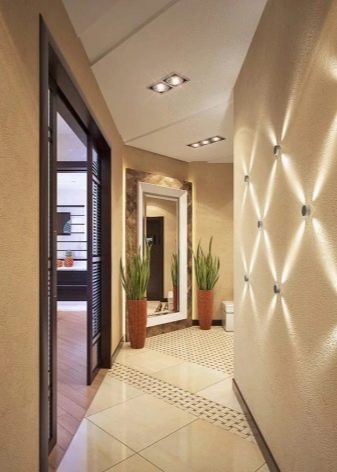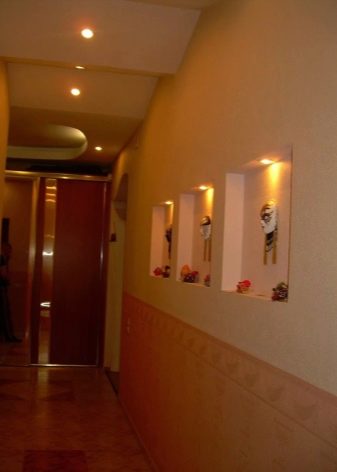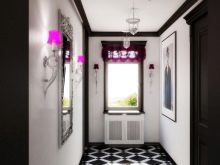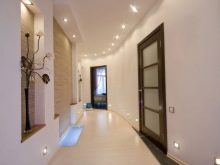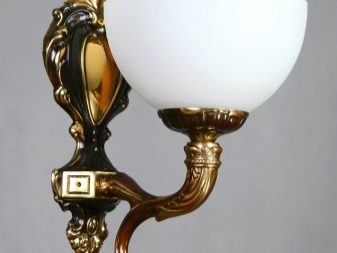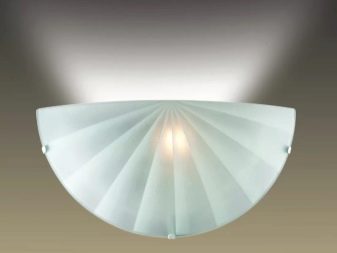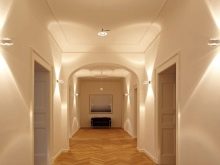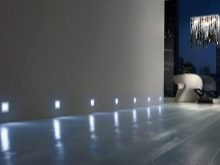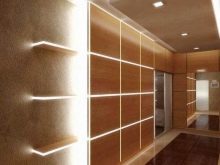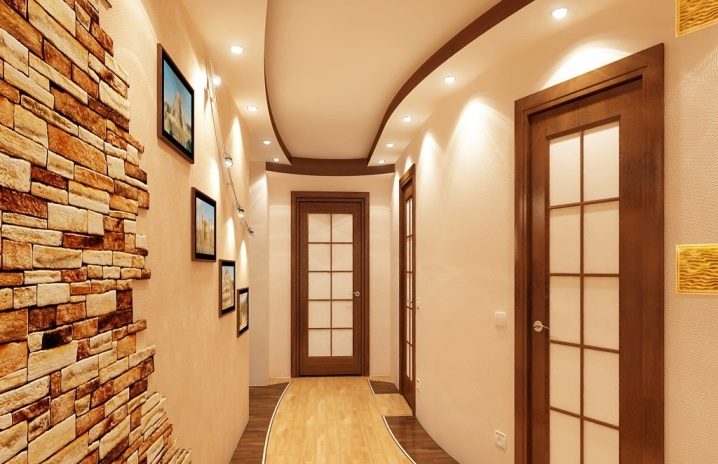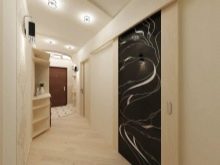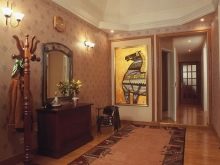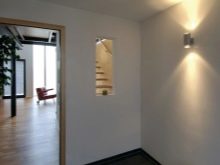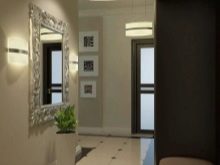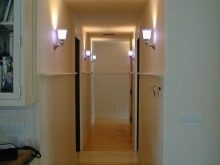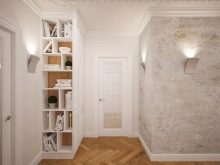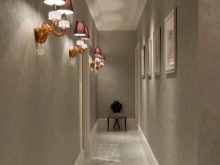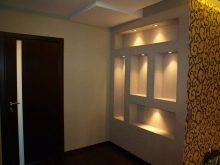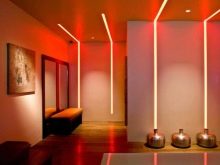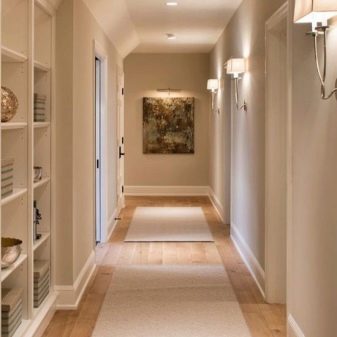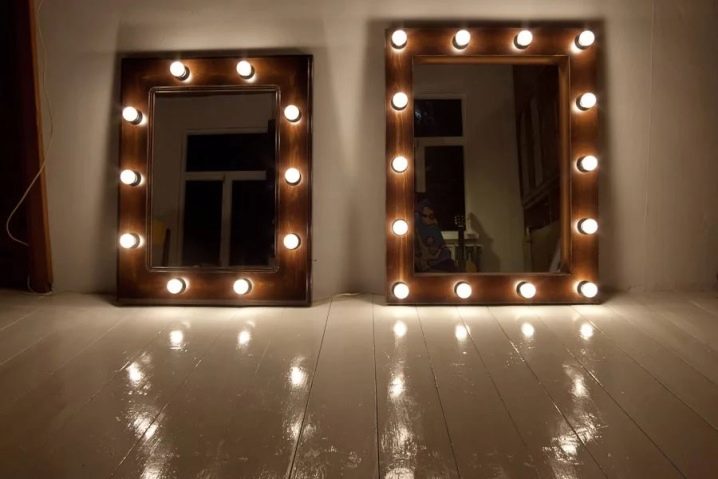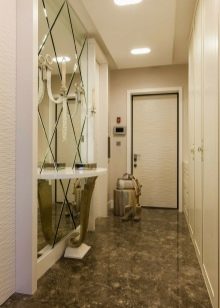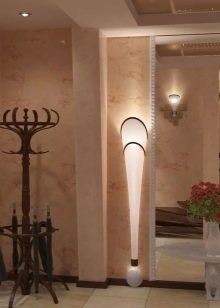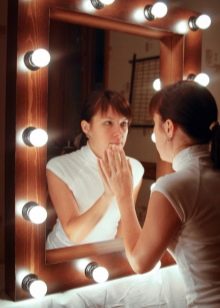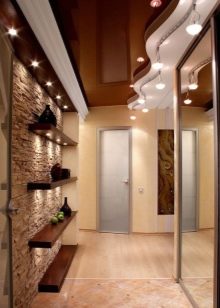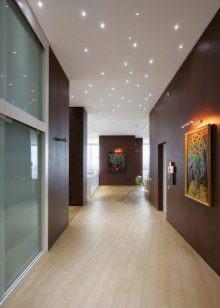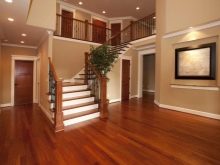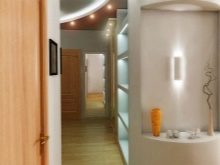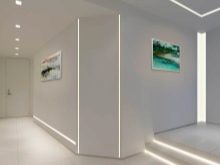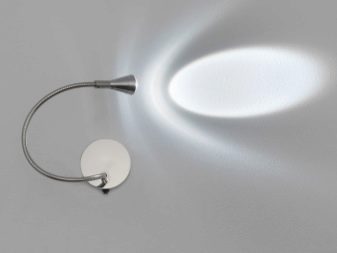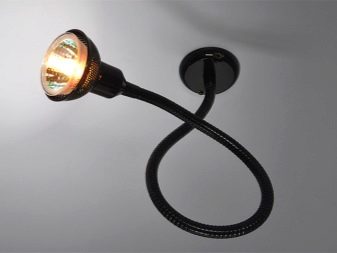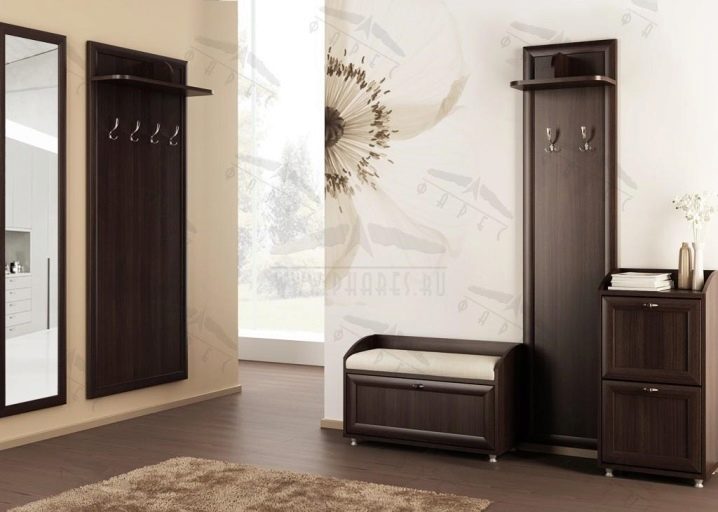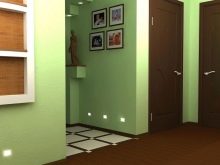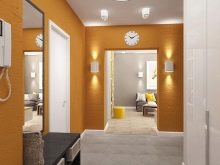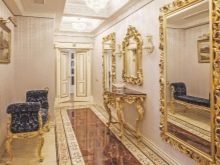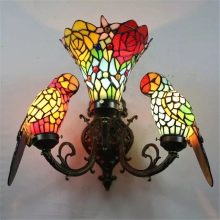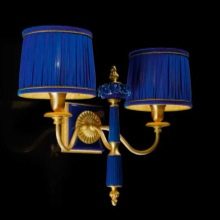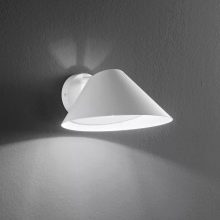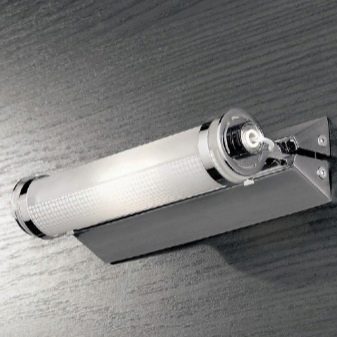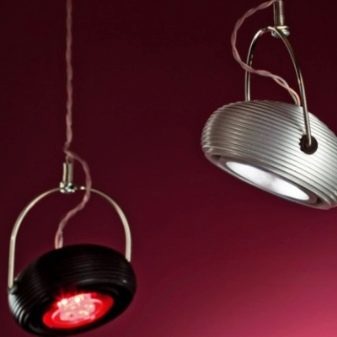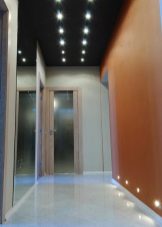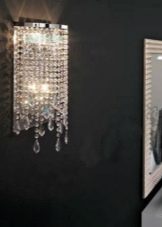Wall lights for the hallway and corridor
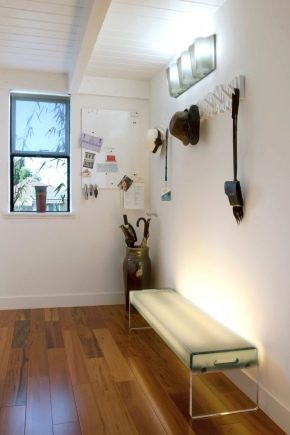
As a person is met by clothes, so the house is estimated by the hallway. In order to conveniently undress and dress, look in the mirror so that guests can appreciate the beauty of the front room of the house, you need to properly organize the lighting of the hallway. Special attention should be paid to wall lamps.
How to choose the type of lighting?
Before choosing lamps, you need to answer a few questions:
- Where will they be located?
- What area to cover?
- What is the principle of work?
- What kind of light bulbs will be used?
- What type of lamp to choose?
So, light sources can be placed on the wall as well.
By area of coverage, they can be local or general. In this case, the light can be artificial or natural, if the hallway has a window. According to the principle of operation - manual on (off) or using a motion sensor.
Different types of lamps can be used: cheap but not durable incandescent lamps; inexpensive but rapidly overheating halogen lamps; economical, long-lived, expensive fluorescent or expensive, but perfectly illuminating LED.
There are several types of wall lights:
- classic sconces with different versions of shades and lampshades,
- hemispherical shades, which are tightly pressed against the wall,
- spots,
- built-in lamps
- led strip.
Having carefully considered the answers to all the above questions, many wall lighting chooses a single light source or combines it with other types of lighting.
It should be remembered that from the light of wall lights will be perfectly visible all the defects on the walls. And if any, it is better to first align the walls.
Location Rules
The number and types of light sources depend on the size of the room and whether there is a corridor next to it leading to other rooms. But in general, you can use the following tips:
- Light sources should be so arranged to enhance the impression of beautiful furniture, mirrors, paintings, but to hide the builders' flaws.
- The lighting should be such that in the mirror you can clearly see the face without shadow, while at the same time the surrounding light should not be blind.
- For the mirror you need to provide separate lighting.
- The light falling from the open doors of other rooms should not be too contrasted in the hallway, otherwise the eyes will ache when moving to other rooms.
- For large halls, it is better to divide all light sources into several groups - this is how energy can be saved, including light only where it is needed at the moment.
- With the help of loop-through switches, it is possible to turn on the light at the beginning of a long corridor and turn it off at the end.
- In a large room it is necessary to provide local wall lighting.
- It is important to choose light bulbs with a pleasant natural spectrum of light.
Kinds
The main requirement for lighting devices for corridors - they should not interfere with movement. Therefore, it is reasonable to place a hemispherical ceiling. Or for the visual increase of the space under the ceiling, you can hold the LED strip. This unusual, but very beautiful decoration will make the corridor brighter and more romantic. On the walls you can place photos in frames and prints, which will focus on attention.
But if the corridor is decorated with plasterboard, then the lamps can be embedded in the walls. Separate svetotochki feature in a straight line or in the form of a figure. In this case, depending on the design of the lamp may be monochromatic or multi-colored.
If the corridor is a continuation of the hallway, then the LED lamps can be built directly above the baseboard as auxiliary lighting for the dark corridor.
Ideas for a small room
Thinking through the lighting for the hallway of small size, you need to understand what can be placed here. Whatever the room size, without a mirror is not enough. And it requires separate lighting. For this, sconces are quite suitable.
Their main feature is that lamps are hung on a wall at a height of no more than 2 meters.
They can be placed on the sides or one above the mirror surface in the center. In addition, you can glue small wireless lights on the mirror. But do not forget that there are mirrors for sale with already built-in point light bulbs. Reflected in the surface, they will create the effect of a multitude of luminous points.
When zoning a small space, you need to remember that:
- so that the shadow of the face does not fall on the mirror, the light should fall from the front, not from behind;
- incandescent lamps and halogen will give a natural spectrum of light, energy saving - "dead" light;
- so that the light from the lamps does not blind, you can use flexible brackets or turning spots.
The space of a small hallway can also be visually increased due to lamps located along the perimeter on the walls. If you choose spots for lighting, you can direct them to the ceiling as well as to the floor, walls, mirror, and wardrobe. Then one spot can illuminate several zones at once.
You should choose the level of the location of the light points correctly. If the built-in lamps are placed directly under the ceiling, then the hallway will turn into a well.It is better to choose lamps with hemispherical shades, the light from which diverges both up and down. If they are located at a height of at least one meter from the ceiling, the walls will be original illuminated.
If the hallway has a closet, then it can also be highlighted. Moreover, modern furniture models are produced with spotlights.
L-shaped corridor or large hall
It is not necessary that the hall will go into the corridor, but it can be assumed that the two spaces are connected and have a large area. Here can combine several types of lighting. For the hall can be used and sconces, and ceiling lamps. In addition, light from other rooms with stained glass or frosted glass can also be involved here. Corrugated glass will also provide additional light.
If there are niches or shelves in the walls, paintings or photographs in a large L-shaped corridor, they can be highlighted with built-in lights or LED strips.
In addition, drywall provides an excellent opportunity to experiment with space.The corridor, decorated in a marine style, may have several "portholes" with aquariums, which have a mandatory backlight.
Spotlights built above the floor will resemble a runway in the length of the corridor, while closer to the ceiling there will be spotted turning spots decorated with star patterns. In such a corridor, you can use walk-through lights, which will turn on by pressing the switch at the beginning of the corridor, and turn off by pressing on another at the end of the corridor.
In addition, there are lamps with motion sensors that react to movement and turn off as soon as there is no one in the corridor.
When choosing a sconce for the hall should focus on the environment. If there is a ceiling light, the wall lights can diffuse a soft dim light. This means that the bulbs will be covered with shades and lampshades. If there are no chandeliers in the interior, the light on the walls should be brighter and more open. Well suited for this fixture on flexible brackets.
The combination of color, style and size
Properly selected colors can make your hallway cozy and attractive.Despite the fact that here they change clothes from street clothes, which can turn out to be dirty, you should not pick up dark wallpapers and furniture.
For a visual increase in space, you can choose beige-colored walls and wenge furniture. Also for the visual increase in space, you can use distracting elements.
For example, if there are doors to other rooms next to the hallway, you can paint them in bright colors, leaving the walls light. Or paint the walls of the adjacent corridor in the style of color stretching, when the color from floor to ceiling smoothly changes from dark to light.
When you try to arrange the front room in a certain style, you also need to know which colors correspond to a particular decision. In addition, each style requires a certain space.
- For example, Empire associated with luxury, which means it is not suitable for a small square. A sconce with gold or red, green or blue lamp shades will look expensive on white walls decorated with stucco or stencils.
- When making Art Deco Different colors are allowed, as the style itself is a mixture of motifs from around the world.Since baguettes are often used here to decorate paintings and photographs, spotlights can be embedded in them. For the same style the lamp is suitable - a tablet, the ceiling of which is a stained glass window.
- Classicism appropriate to use in the lobby. Forged ceiling chandelier should be combined with the same sconces. The classic combination is white with blue. But gold, greens are also inherent in classicism. Light should be a natural spectrum and illuminate a large area. This style needs to find the appropriate mirror.
- In modern style make the hallway easier. First, there are many such styles. Secondly, do not have to buy fancy rare furniture. For example, minimalism generally require a minimum of furniture and fixtures. White and black colors are used. But lamps can be an accent in design and have a different color.
- Pop Art - it is bright and colorful. Upon entering the large square hallway, this is appropriate, but in a small room, bright colors will irritate the eyes. In this style, you can use multiple colors in one subject. For example, paired hemispherical lamps of different colors.
- Hall in style high tech - this is a beautiful miracle.Chrome-plated metal and glass - the basis of style. Our industry offers a lot of lamps in this style. But hi-tech loves decorative elements interspersed with bright spots in the interior. The main thing is that there should not be many of them.
In conclusion, I would like to draw attention to a few points when designing the hallway wall lamps:
- the closer the light points to the floor, the softer the light looks;
- crystal and glass lampshades and ceiling give the most light;
- for dimmed lighting should be used for lampshades fabric, plastic, wood;
- if the store did not find a wall lamp of a suitable model, then it is not difficult to make it yourself, decorating an old lamp or creating a new one from the materials at hand.
The nuances of the organization of lighting in the hallway, see the following video.
